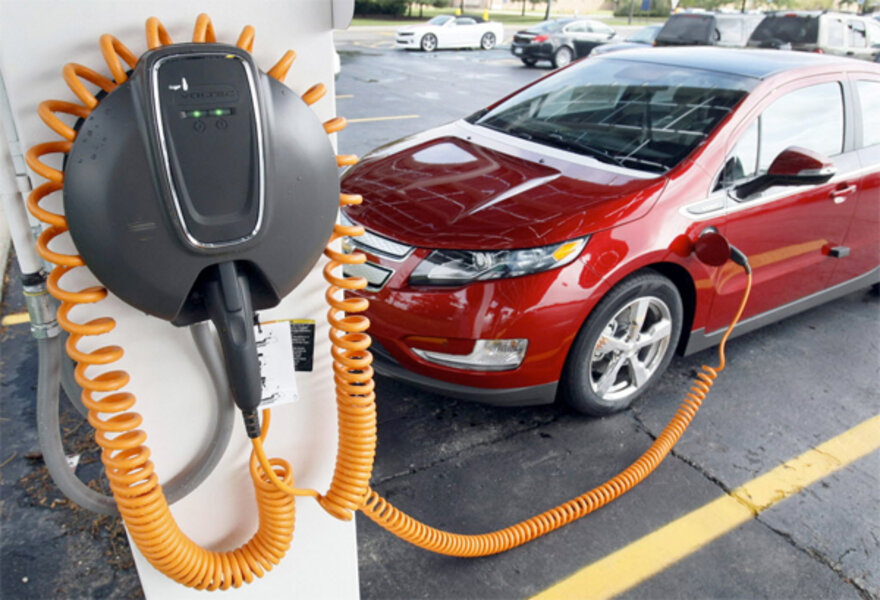By Mark Clayton/Staff Writer
People love to hate the electric car. This year, only the second in which vehicles using electric motors for primary propulsion were widely available, the technology was hammered by pundits, politicians, and analysts. Yet despite inflated sales expectations, plug-in vehicles are doing quite well when compared with the last big technology to hit the auto industry – the gas-electric hybrid, analysts say.
Plug-in vehicles like the Chevrolet Volt, Toyota Prius PHV, and all-electric Nissan Leaf are on pace for combined sales of about 50,000 by year-end – far ahead of what hybrid sales were at the same stage of market development – and a 280 percent jump in sales over 2011, according to data from Baum & Associates, an auto industry research firm. Next year will bring 33 models from a dozen companies.
"We expect that plug-in vehicles will continue to outpace the historical penetration of hybrid vehicles during their first years in the market, which is remarkable given their higher cost and unfamiliar operating requirements," says John Gartner, an industry analyst with Pike Research, a Boulder, Colo., market research firm. "2012 will go down as the year when plug-ins became legitimate participants in the global automotive market, and an important step along the journey towards broader consumer acceptance."
Other indicators suggest he may be right. In October, the Toyota Prius plug-in version and Chevy Volt turned in their best monthly sales. Volt sales set records three months in a row with about 3,000 units sold last month and more than 20,000 so far this year. The Volt today outsells many well-known conventional gasoline-powered models like the Mazda Miata, Audi A3, and Lexus GS, a Natural Resources Defense Council study found. It beats Chevrolet's Corvette, too, which nobody is declaring a loser.
At the current pace, global sales of plug-in vehicles are projected to leap past 1 million units in 2017, after seven years in the market – about half the time it took hybrid electric vehicles to reach that level, Pike Research reports. By 2020, worldwide sales volumes will reach 1.7 million with most of those sales in the United States.
Not everyone is convinced. "Electric vehicles don't make any more sense today than they did in 1912," Sean McAlinden, an analyst at the Center for Automotive Research, told the New York Daily News this summer. "They take too long to charge. The range is too short and they cost too much."
But plug-ins are a catalyst technology helping automakers reach the next federal milestone of 54.5 fleet miles per gallon by 2025. That, in turn, will lop 4 billion barrels off American oil consumption and 2 billion tons of greenhouse-gas emissions over the lifetimes of vehicles purchased during the coming decade or so – at least denting the US auto world's share of greenhouse-gas emissions.
The rate of adoption, all by itself, still isn't enough to make a huge difference in emissions and its impact on climate change. But it could as part of a broader effort.
Plug-in technology has also been hammered for allegedly exchanging one form of pollution (tailpipe) for another (power plant smokestack). But several major studies have shown that, when compared with most cars, electric-drive vehicles are a plus for the environment no matter where they charge up.







